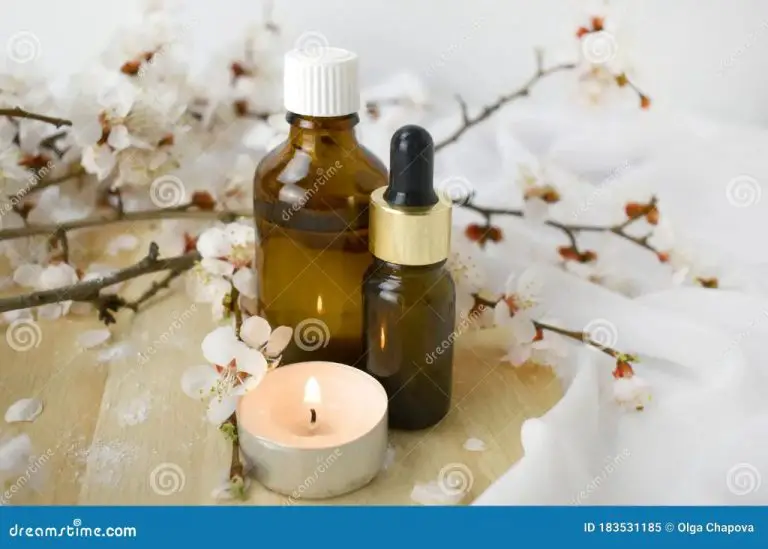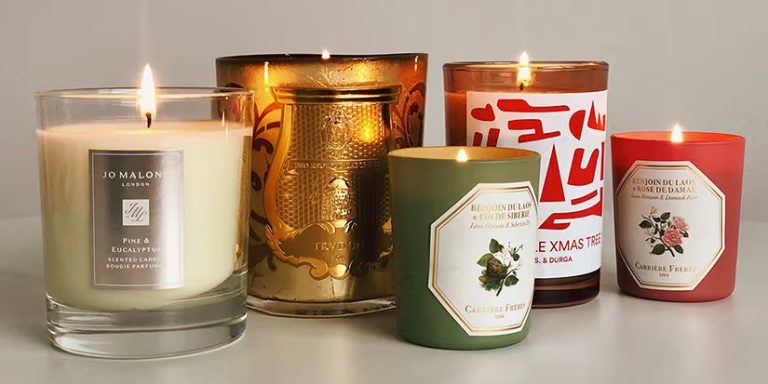How Can I Scent My Candles Naturally?
Naturally scented candles are candles that are fragranced using essential oils, dried herbs and spices, fruits, flowers, resins, and other natural materials rather than synthetic fragrances. The natural scents come directly from plants, so they provide a pure, authentic aroma without any added chemicals. Some popular natural scents for candles include lavender, vanilla, citrus fruits, pine, cinnamon, rose, and jasmine.
Naturally scented candles have several benefits compared to candles made with artificial fragrances. Natural scents often have therapeutic effects – for example, lavender promotes relaxation. Naturally scented candles also burn cleaner, with less soot, since they don’t contain petroleum-based fragrance oils. Additionally, natural scented candles are less irritating for people with sensitivities. Finally, natural scents avoid the questionable health effects of synthetic fragrance chemicals.
Essential Oils
Essential oils are one of the most popular ways to naturally scent candles. Some of the most commonly used essential oils for candle making include lavender, lemon, peppermint, eucalyptus, tea tree, rosemary, and cedarwood (source). These oils provide calming, energizing, or woodsy aromas when used in candles.
To use essential oils, simply add a few drops directly into the wax as the candle hardens or drizzle oils on the top of the cooled wax. Most recipes call for adding 0.5 to 1 ounce of essential oil per pound of wax. Start with less at first and increase slowly to reach the desired scent level. Too much oil can negatively impact how the candle burns. Store essential oils properly in a cool, dark place when not in use.
Popular pairings for essential oil candle scents include lavender-cedarwood, lemon-peppermint, and eucalyptus-tea tree. Experimenting with different oil combinations can result in unique, custom candle scents.
Dried Herbs and Spices
Some common herbs and spices that can be used to scent candles naturally include lavender, rosemary, sage, basil, cinnamon, and clove. These ingredients can infuse candles with their unique aromatic qualities. To use dried herbs and spices, first grind or process them into a fine powder using a mortar and pestle, spice grinder, or food processor. A good rule of thumb is to use approximately 1-2 teaspoons of dried herbs or spices per 1 pound of wax when making scented candles.
Lavender is a popular scent for candles and can promote relaxation. Cinnamon and clove add a warm, spicy fragrance perfect for fall and winter candles. Rosemary and sage impart an herbal, earthy aroma. Basil provides a refreshing, slightly sweet scent. Experiment with combining different herbs and spices to create custom blended scents.
Be sure to store candle wax scented with dried botanicals in an airtight container away from light and heat to help retain the aromatic qualities. Properly stored, dried herbs and spices can scent candles for 6 months or longer before losing their potency.
Wood
Wood can add a natural, earthy aroma to candles. There are a few different ways to use wood to scent candles:
Wood shavings or sawdust from fragrant woods like cedar, pine, sandalwood, and cinnamon can be added directly to the wax. Cedar and pine give a fresh, forest scent, while sandalwood and cinnamon provide a warm, spicy aroma. Be sure to use untreated, natural wood rather than chemically treated wood dust. Add just a small amount of shavings and stir well so they are evenly distributed in the wax. Too much wood dust can clog the wick (source: https://www.woodwick-candles.com/woodwick.html).
Essential oils extracted from wood like cedarwood, pine needle, sandalwood, and cinnamon bark oils offer concentrated wood scents. Add a few drops of the essential oil per ounce of wax and stir well. Essential oils are very potent so start with small amounts. Certain wood oils like cinnamon can cause skin irritation for some, so test a small dab on your arm before working with them. Use essential oils sparingly, as they can produce more smoke and affect how the candle burns (source: https://hemlockpark.com/collections/wood-wick-candles).
Fruits and Vegetables
Certain fruits and vegetables can be used to naturally scent candles. Some popular options include:
Citrus fruits like oranges, lemons, limes, and grapefruit: The oils in the peels can provide fresh, bright scents. Both fresh peels or dried peels can be used. For strong fragrance, use around 1-2 tablespoons of peel per 1 pound of wax.
Berries like strawberries, raspberries, blueberries: These can provide sweet, fruity scents when dried. Use about 1⁄4 to 1⁄2 cup of dried berries per 1 pound of wax. Fresh berries contain too much water.
Apples, pears, peaches, plums: Dried slices or peels of these fruits impart natural, subtle, sweet scents. Use 1-2 tablespoons dried fruit per 1 pound of wax.
Herbs like basil, rosemary, thyme: Dried leaves can provide fresh herbal scents. Use 1-2 tablespoons per 1 pound of wax.
Spices like cinnamon, nutmeg, ginger: These add warming, aromatic scents. Use just 1⁄4 to 1⁄2 teaspoon per 1 pound of wax to avoid being overpowering.
Always make sure fruits and vegetables are thoroughly dried first before adding to candle wax to remove excess moisture.

Resins and Balsams
Natural resins like frankincense, myrrh, and copal can be used to add pleasant scents to candles. These resins are derived from trees and have been used for centuries in incense and perfumes. When burned, resins give off a woody, earthy aroma. Some popular options include:
Frankincense: Adds a sweet, woody scent. Use 1-2 teaspoons per pound of wax.Resin – scented candle 150 g
Myrrh: Has a balsamic, slightly medicinal scent. Use sparingly, 1/2 to 1 teaspoon per pound of wax.
Copal: Provides a bright, crisp, resinous aroma. Use 1-2 tablespoons per pound of wax.
Benzoin: Derived from a tree native to Thailand, benzoin has a sweet vanilla-like scent. Use 1-2 teaspoons per pound.
The resins can be crushed into a powder or coarsely ground and added directly to melted candle wax before pouring into containers. Go lightly when adding resins, as a little goes a long way. The resins will provide a subtle, luxurious background note to complement other more dominant aromas like essential oils and herbs.
Flowers and Petals
Dried flowers and petals can add light, floral scents to candles. Some of the best flowers to dry for candlemaking include:
- Lavender – Adds a light, soothing floral scent. Dried lavender buds work best.
- Roses – Classic rose scent. Use fully opened dried rosebuds.
- Jasmine – Exotic, sweet floral scent. Dried jasmine flowers or buds.
- Chamomile – Light, fruity, apple-like scent. Dried chamomile flowers.
- Honeysuckle – Sweet, nectar-like scent. Dried honeysuckle flowers and buds.
A good rule of thumb is to use about 1-2 teaspoons of dried petals or flowers per 1 pound of wax when making candles. It’s best to experiment with small batches first to test the scent strength. Gently mix the dried blooms into melted wax before pouring candles. Store dried flowers in an airtight container away from light to preserve scent.
Some blossoms like roses, jasmine and lavender can be quite strong, so use a delicate hand when blending floral scents. Make sure to fully dry flowers and buds first, as excess moisture can cause sputtering when burning candles. With the right blooms and blending, flower petals can add natural, delicate fragrance to homemade candles.
Blending Scents
One of the best parts about using natural ingredients to scent candles is the ability to create custom blends. Experimenting with different scent combinations allows you to develop unique candle fragrances that reflect your personal preferences.
When blending essential oils, dried herbs, flowers, woods, and other natural scents, it helps to think in terms of scent “notes.” Top notes have light, fresh fragrances that smell strong initially before fading. Middle or heart notes form the core of your candle’s aroma. Base notes have rich, deep scents that ground the overall blend.
To make a well-balanced, multi-layered blend:
- Use 1-2 top notes like citrus, herb or floral oils
- Add 2-3 middle notes such as wood, spice or fruit oils
- Include 1-2 base notes like resin, musk or vanilla
Keep scent ratios in mind too. If adding multiple oils, make sure none exceeds 3-5% of the candle wax by volume. Start with test blends in small amounts before scaling up.
Finally, note how different waxes, wicks, and vessel shapes impact hot and cold throw. Adjust your blends until you achieve the perfect aromatic candle for your needs.
Storing Naturally Scented Candles
Properly storing your homemade, naturally scented candles is important to preserve the scent and maximize shelf life. Unlike synthetic candle fragrances, natural scents can fade more quickly without proper storage. According to Harlem Candle Company, you’ll want to store candles in a cool place with an even, room temperature below 80°F. Excess heat can cause the wax to soften and lose its shape. Storing candles in the refrigerator is another option to help set the wax fully and lock in scent. However, allow refrigerated candles to come fully to room temperature before lighting to prevent issues with tunneling. Store candles in a tightly sealed glass jar or container to protect from dust, humidity, and other factors that can cause scent loss over time.
According to Smells Candles, glass jars with tight lids are optimal for locking in scent molecules and preventing the wax from becoming soft or brittle. Wick caps can also help preserve fragrance. Keep candles out of direct sunlight and enclosed storage is best. With proper storage methods, naturally scented candles can retain their aroma for 1-2 years or longer before scent fade becomes noticeable.
Safety Tips
When making and burning candles scented with natural ingredients, it’s important to follow basic safety precautions. Here are some tips for staying safe:
Use the proper wick size for your candle. A wick that is too small will prevent the candle from burning properly and release more unburned wax and soot. Choose a wick that is appropriate for your candle’s diameter and wax type. Test different wick sizes to find the best option. [1]
Never leave a burning candle unattended. Extinguish candles before leaving a room or going to sleep. Make sure candles are fully extinguished and cooled before leaving them unattended. [2]
Keep candles away from drafts which can cause rapid, uneven burning and dripping. Drafts can blow the flame into curtains or other combustible materials. Place candles a safe distance from windows, AC vents, and fans.
Follow all additional NFPA guidelines for safe placement, type of holders, trimming wicks, and supervision.
Take precautions and candles scented with natural ingredients can be safely enjoyed.





